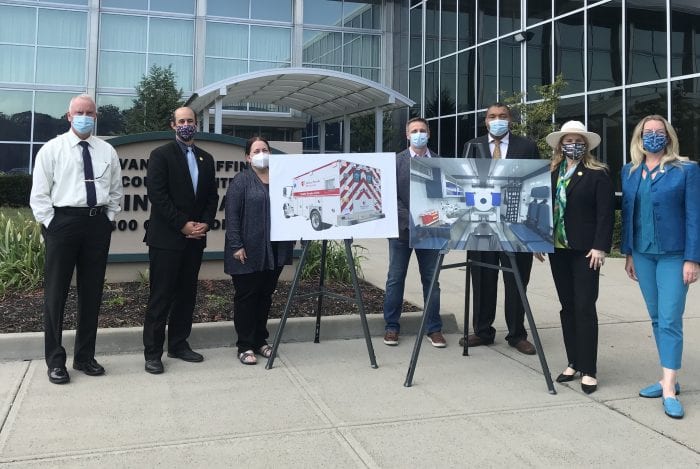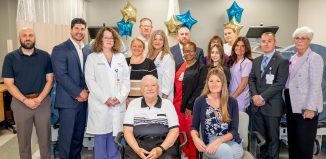SC Legislators Laud Mobile Stroke Unit

In March of last year, Dr. David Fiorella went before the Suffolk County Health Committee chaired by Legislator William “Doc” Spencer (D-Centerport) and announced the launch of Long Island’s first Mobile Stroke Unit program aimed at reducing death of stroke victims. Fast forward 18 months and Fiorella has reported to the same committee Oct. 1 that since deployment, the MSU has been on over 1000 total calls. Findings during the first-year show Stony Brook Medicine’s units have successfully facilitated the diagnosis and rapid delivery of time-critical therapies to stroke patients at the point of care resulting in substantially improved outcomes.
“We are also very grateful to all of the members for the Suffolk County Legislature for their help in promoting the program’s success and look forward to further improving upon these outcomes and expanding this program to service even more residents of Suffolk County in the future,” said Fiorella, a neurointerventionalist and Director of the Stony Brook Cerebrovascular Center and Co-Director of the Stony Brook Cerebrovascular and Comprehensive Stroke Center.
Fiorella also mentioned their intent to locate two more stroke units to add to the current slate located at Long Island Expressway Exits 57 and 68. Each unit is equipped with telehealth capability to communicate with physicians at Stony Brook University Hospital. When a suspected stroke call comes in, the mobile stroke unit is dispatched and the team works quickly to determine the type of stroke the patient is experiencing using the features on board including a CT scanner and CT angiogram. Once that is determined, first responders in the unit can begin administering time-sensitive stroke treatments.
Data from the program further shows stroke patients transported by the MSU had much greater rates of discharges directly from the hospital to home after treatment, higher rates of independent clinical outcomes after stroke and much lower rates of death from stroke when compared to national averages, county average, and Stony Brook’s own data preceding the MSU program.
“The work that Dr. Fiorella and his team are doing is extraordinary,” Spencer said. “The reduced time it takes their units to reach and care for stroke victims is yielding measurable improvements to the lives they touch.”
Spencer also noted the legislature’s goal in expanding the program.
Strokes are a major public health concern nationwide. Every 40 seconds, someone in the United States suffers a stroke and every four minutes someone dies on one, according to the American heart Association.






